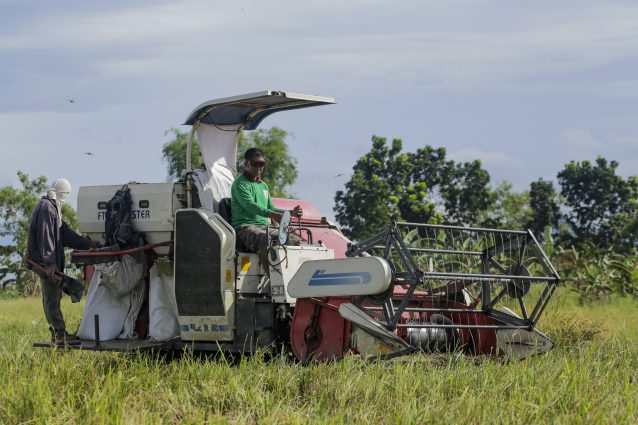
Farmers often get excited come harvest time. Unfortunately, some overlook that postproduction practices are as important as growing rice.
A 2010 study by the Philippine Center for Postharvest Development and Mechanization shows that 16.47% of rice is lost on postproduction. When saved, experts said, the losses could have covered the amount of rice imported annually.
Dealing with rice the right way
1. Harvest at the right time
As rice varieties are shattering or moderately shattering, PhilRice expert Dr. Arnold S. Juliano explained that waiting for all grains to mature means many would have fallen off the ground.
Seed growers should harvest if 90-95% of the rice grains per panicle are already ripe when harvesting manually and 95-100% when using a combine harvester.
For commercial growers, rice can be harvested when 80-85% of the grains are already ripe. Moisture content should be between 20-25%. Rice stalks also softens by this time that causes lodging and further losses.
When harvesting manually, farmers are advised to thresh immediately to prevent extra shattering losses.
Experts also encourage farmers to drain/dry the field before harvest as this prevents mud from mixing with the grains and makes harvesting faster especially when using mechanical harvesters.
2. Cleaning
Cleaning ensures that impurities, such as rice straw, are removed from the grains. This is made easy by the PhilRice seed cleaner that can clean palay up to 1.5t/hr for initial cleaning after threshing and up to 2t/hr for final cleaning after drying. Easy to operate, the machine has less than 1% cleaning loss and 97% grain purity after two passes.
Threshers and combine harvesters also have built-in blowers.
3. Dry palay accordingly
Juliano said palay should be dried as soon as possible after harvesting to ensure grain quality. “Any delay, even for a day, can induce heat build-up and cause grain discoloration that lowers grain quality,” he said.
Drying lowers grain moisture content (MC)to a safe level for storage and other processes like milling. Based on the operations handbook on direct-seeded and transplanted rice production published by PhilRice, CLSU, and KOPIA, 14% MC is recommended to achieve maximum milling results. Lower MC causes grain breakage t resulting in lower head rice recovery. For seed production, PhilRice recommends 12-14% MC to prolong storage.
According to Juliano, most practical still for farmers is sun drying. He cautioned farmers, however, to avoid direct contact with pavements by using clean nets/mats to prevent wastage, mixture of other matters, and fissure. He advised to stir palay every after 30 minutes for uniform drying.
Mechanical dryers, such as the flatbed dryer and reversible airflow flatbed dyer, that dry palay faster are also available.
4. Store properly
In storing palay, it is important that the right MC is followed. The storage area should also be clean and has proper ventilation. “That is why we use palettes. When you store, spaces between piles should be provided,” Juliano said.
5. Milling
To prevent drop in milling recovery, it is important to dry palay properly. Losses during milling (5.52%) is high because of broken grains or fissure incurred usually during the drying process.
Experts added that using multipass rice mills as single pass mills, such as kiskisans, break the grain that causes low milling recovery.




